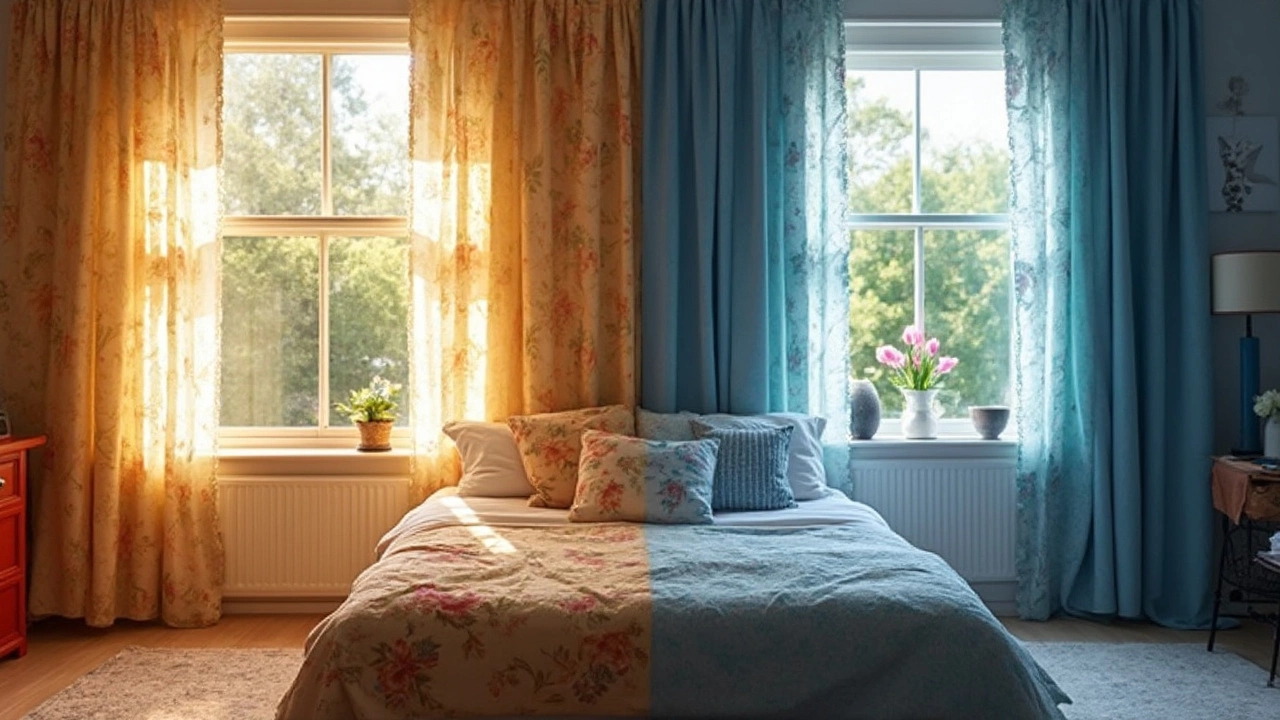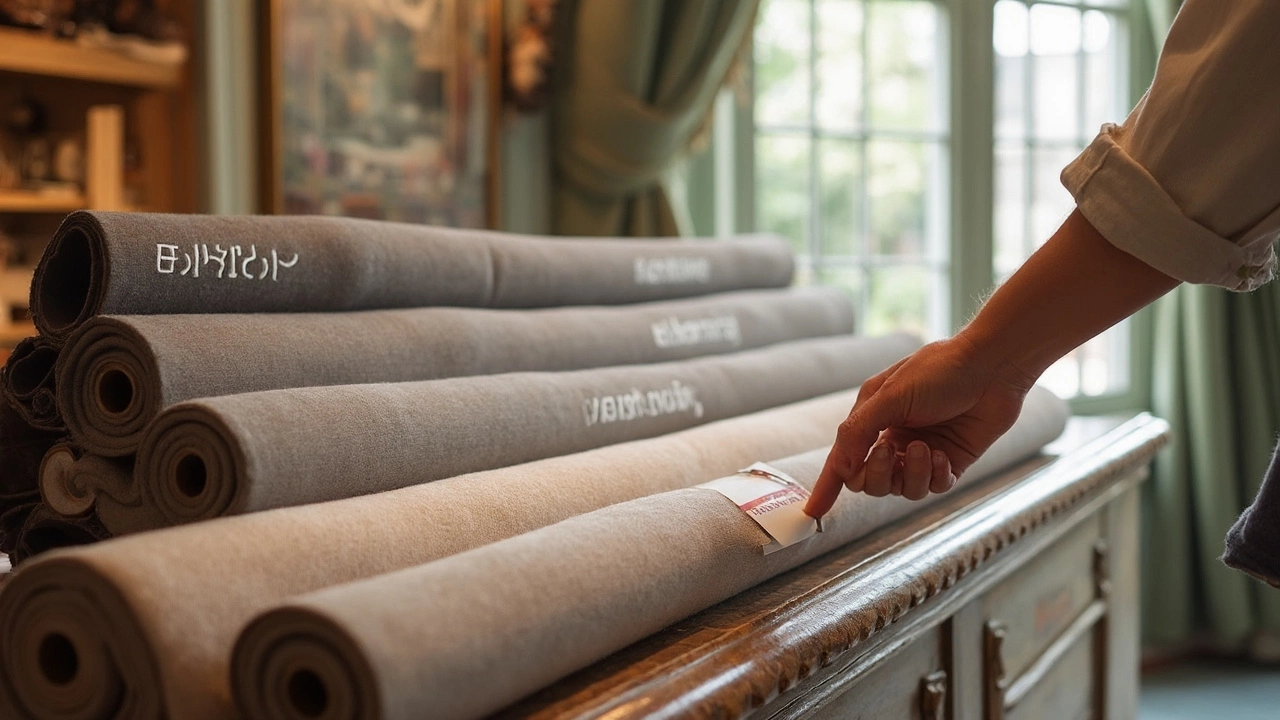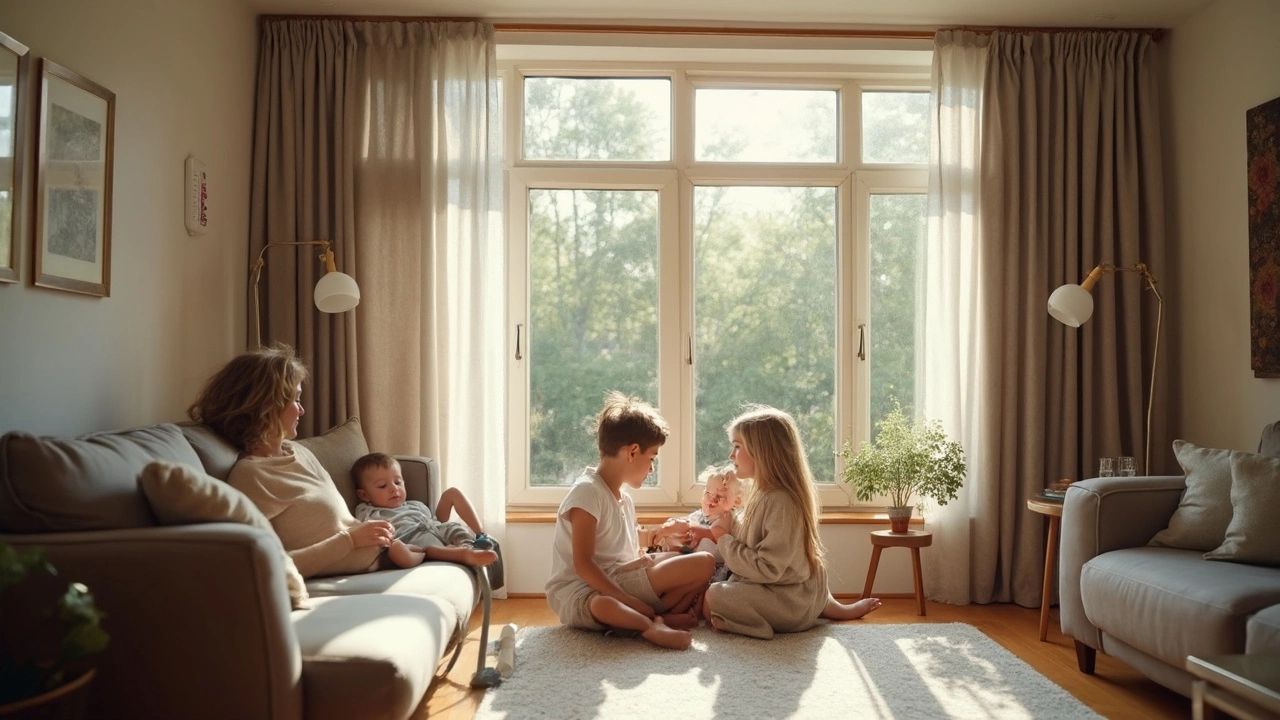Sweating through summer afternoons at home? The right curtains can cut that heat. Curtains aren’t just for privacy or cutting morning light; they can actually help keep rooms cooler when outdoor temps climb.
If you’re wondering what kind of curtains really work against heat, here’s a fact: it’s all about material and design. Basic sheer curtains won’t cut it. Look for specialized fabrics and layers that trap or reflect heat. Sounds complicated? It’s pretty simple once you know what to look for.
Don’t just grab the first stylish panels you see at the store. There are curtains made just for blocking heat—like thermal or insulated curtains—and they aren’t the same as those light chiffon ones. They have special layers that stop sunlight and hot air from sneaking in. When done right, these curtains don’t just keep rooms comfy; they can save you real money on air conditioning bills.
- How Curtains Block Heat
- Types of Heat-Blocking Curtains
- Comparing Curtain Fabrics and Colors
- Installation and Usage Tips
- Energy Savings and Other Benefits
How Curtains Block Heat
It sounds simple: hang something over your window and the room gets cooler. But not all curtains handle heat the same way. The trick is knowing what actually stops heat from barging in. Curtains can block heat two main ways—by reflecting sunlight and by acting like a shield that slows down the heat transfer from outside to inside.
The heat blocking curtains work because of their materials and construction. The thick or layered curtains, like thermal or blackout types, physically block sunlight from pouring into the room. But it’s more than just shade; the right lining can literally reflect the sun’s rays back outside. Some even have a special backing made of foam or tightly woven fabric, which gives them even more “stopping power” against heat.
- Reflection: Light-colored or reflective-backed curtains bounce sunlight away from your window, so less heat makes it indoors.
- Insulation: Thicker curtains, especially those with multiple layers, trap air, which slows down heat transfer. That means less hot air leaks in and less cool air escapes.
To put numbers to it, a study from the U.S. Department of Energy found that tightly fitting, medium-colored drapes with white plastic backings can reduce heat gains by up to 33%. That’s no small thing in a hot summer.
| Type of Curtain | Average Heat Reduction |
|---|---|
| Sheer Curtains | 5-10% |
| Regular Drapes | 10-15% |
| Thermal/Blackout Curtains | 25-33% |
If you want the most impact, curtains should cover the entire window and be hung close to the glass. Even a tiny gap can let in unwanted heat. So, installation matters almost as much as the curtain type.
Types of Heat-Blocking Curtains
If you want to keep your home cool, it matters which kind of curtain you choose. Not all curtains are built for fighting heat, and honestly, some barely make a difference when it’s scorching outside. Here’s a straightforward rundown of the most effective types.
- Thermal curtains: These are the heavy hitters for cooling. They have a special built-in lining—usually acrylic foam or a similar material—that stops heat from passing through. Some brands claim thermal curtains can reduce heat transfer by as much as 33%.
- Blackout curtains: These are famous for blocking light, but they pull double duty by also helping block out heat. Their thick, tightly woven fabric acts as a barrier to sunlight and hot air. Plus, they come in different colors, so you’re not stuck with just boring shades.
- Reflective or solar curtains: These look a bit different, with a shiny or metallic coating on the back that literally bounces sunlight and heat away from windows. They’re especially handy in rooms that get blasted by direct sun. People often use reflective curtains in sunrooms or west-facing bedrooms.
- Insulated cellular shades (honeycomb shades): Technically these are shades, not curtains, but they deserve a mention. Their unique design traps air inside honeycomb-shaped cells, creating a buffer that keeps heat out in the summer and cozy warmth in during winter. They’re easy to pair with curtains for even more protection.
Here’s a quick data snapshot comparing how much these options can block heat:
| Type | Avg. Heat Blocked | Extra Benefit |
|---|---|---|
| Thermal Curtains | Up to 33% | Improves winter insulation, reduces drafts |
| Blackout Curtains | Up to 25% | Blocks outside light, good for bedrooms |
| Reflective/Solar Curtains | Up to 27% | Reflects UV rays, reduces sun fading |
| Cellular Shades | Up to 60% | Year-round temperature control |
If you want real heat-blocking power, pay attention to the curtain’s lining and material, not just how thick it looks. The best bet is using either thermal curtains or pairing a couple of different types for a double layer—think blackout curtains with cellular shades behind them for a serious boost in coolness.

Comparing Curtain Fabrics and Colors
Here’s where you separate the good from the great. The fabric and color of your curtains matter a lot if you’re trying to keep heat out. Some materials are thick and block sunlight, while others let it pour right into your space. Picking the right combo actually makes a difference in how cool your home stays.
First, let’s talk fabrics. Not all are created equal when it comes to blocking heat:
- Blackout curtains are usually made from thick polyester blends with an extra lining. They block up to 99% of sunlight and are awesome for bedrooms and living rooms that get a lot of sun.
- Thermal curtains often have multiple layers, including a heat-reflecting backing. These don’t just block light—they insulate your room, keeping hot air out and cool air in.
- Cotton and linen look nice but don’t offer much heat protection on their own. If you love the look, pair them with a thermal liner.
- Velvet and other heavy fabrics can block some heat because they’re dense, but they’ll be much more effective with a special lining.
Color is another thing people overlook. Light colors reflect heat, while dark ones soak it up. If your goal is to keep things cool, choose white, beige, or pale gray, especially for rooms that face south or west.
| Fabric Type | Heat Blocking Ability | Typical Colors |
|---|---|---|
| Blackout (polyester blend) | Up to 99% | Wide range, best in light shades |
| Thermal (multi-layer) | 80–95% | Usually neutral/light |
| Cotton/Linen | 20–40% | Light or dark, best with liner |
| Velvet (heavyweight) | 40–60% | Darker, but add a light liner for better results |
If you already have curtains you love, you don’t have to toss them. Pick up some thermal or reflective liners and add them to your existing setup. It’s way cheaper than replacing everything, and you still get the style you want with bonus heat-blocking power.
Installation and Usage Tips
Getting the most out of heat-blocking curtains isn’t just about picking the right ones—it’s all about how you hang and use them. A lot of people lose out on the benefits because they hang curtains the wrong way or leave gaps that let heat sneak in.
First off, hang curtains as close to the window as possible. This helps trap hot air and stops it from drifting into your room. Ideally, your curtains should cover the entire window and extend a few inches beyond the frame on each side and at the bottom. This extra coverage makes a real difference, especially with heat blocking curtains on south- and west-facing windows.
- Choose a curtain rod that holds panels snug against the wall. Wraparound rods or curved rods help block gaps at the edges.
- Install curtain brackets a bit higher above the window (about 6-12 inches) and let curtains hang below the window sill. This extra height and length guards against heat sneaking in from above or below.
- If you want even more insulation, consider double-layering with sheer curtains underneath and blackout or thermal curtains on top. Open the heavy curtains at night to let cooler air in and close them during the day to shut the heat out.
- Seal off gaps at the sides with magnetic strips or Velcro if heat still seems to be leaking in.
Let’s look at a quick comparison of room temperatures depending on when curtains are kept closed or open during peak summer days. Leaving curtains open seems innocent, but it’s like inviting a heatwave inside:
| Room Setup | Midday Temp (°F) |
|---|---|
| No Curtains | 84 |
| Regular Cotton Curtains (open) | 82 |
| Thermal Curtains (closed) | 75 |
See the difference? Keeping thermal curtains fully closed during the hottest part of the day can knock nearly 10 degrees off your indoor temps, and you’ll really feel it.
Don’t forget to keep heavy curtains closed before sunlight hits your windows, not just after it’s already warmed the room. If you’re leaving the house, closing the curtains first can help you return to a cooler home—no blasting AC needed the minute you walk in.

Energy Savings and Other Benefits
Using heat-blocking curtains can seriously cut down your energy bills, especially during summer. According to the U.S. Department of Energy, window coverings like thermal curtains can reduce heat gain by up to 33% in a typical home. That means your air conditioner doesn’t have to work as hard, so you end up using less electricity and your house stays cooler without cranking the AC all day.
Want hard numbers? Here’s how much you might save using energy-efficient curtains during peak summer months:
| Room | Estimated Monthly Savings (USD) |
|---|---|
| Living Room (Large window) | $10-$20 |
| Bedroom (Medium window) | $5-$12 |
| Total House (All major windows) | $30-$45 |
But saving money isn’t the only perk. Here’s what else you get with good curtains that block heat:
- More comfort: Rooms feel cooler and less stuffy, especially on hot days.
- Furniture protection: No more sun-bleached furniture or faded carpets, since heat-blocking curtains also limit harsh sunlight.
- More privacy: Thick, multi-layered curtains make it tough for anyone to see inside.
- Less street noise: Many thermal curtains help muffle sound from outside, so it’s quieter indoors.
- All-year value: Some energy-efficient curtains also keep heat inside during winter, so you won’t have to worry about cold drafts either.
Investing in the right curtains is a simple upgrade that pays off for both comfort and your wallet. Plus, it’s a quick DIY fix—no special tools required, just a sturdy curtain rod and a few minutes of installation.

